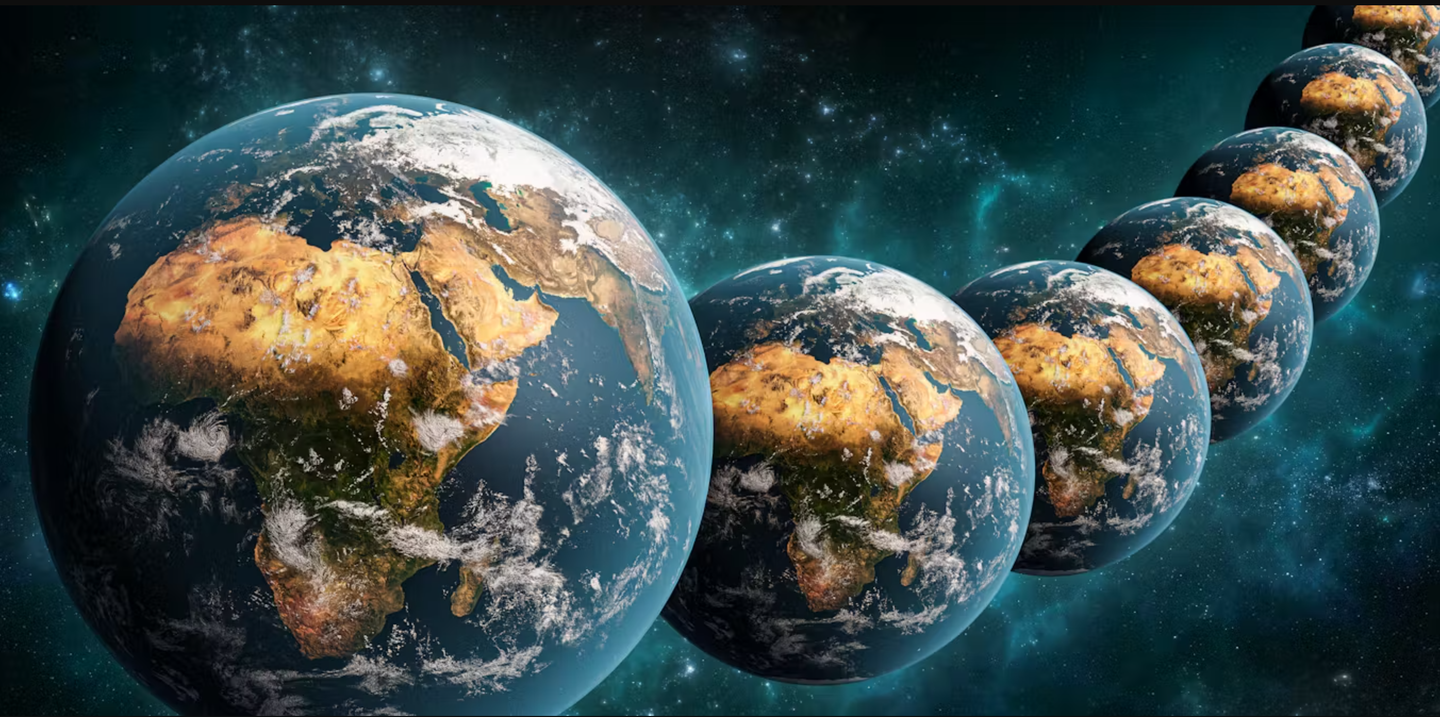Scientists propose a radically different universe containing multiple dimensions of time
Physicists propose expanding Einstein’s special relativity to include observers moving faster than light—a leap beyond current theory.

Observers traveling beyond light speed would see the world in a radically different way. (CREDIT: Shutterstock)
Physicists have taken a bold step beyond Einstein's special theory of relativity, proposing an expansion of special relativity that includes observers moving faster than light. This fresh perspective shakes up long-held ideas about cause and effect and invites us to imagine an entirely new kind of universe.
Einstein’s special relativity, introduced in 1905, brought together space and time into one four-dimensional model. It rests on two key ideas: Galileo’s principle of relativity and the constant speed of light. These principles form the foundation of modern physics.
According to physicist Andrzej Dragan, Galileo's principle plays a central role. It says the laws of physics should hold true for all observers moving at constant speeds. Until now, that rule applied only to those moving slower than light. But recent insights suggest there’s no rule that says faster-than-light observers must be excluded.
Observers traveling beyond light speed would see the world in a radically different way. For them, strange events like particles taking multiple paths at once would seem normal rather than bizarre. Reality, from their viewpoint, operates under a new set of rules.
Exploring How Cause and Effect Work in Quantum Physics
As Prof. Krzysztof Turzyński explains, for these superluminal observers, the Newtonian idea of particles as single points falls apart. The world, in their frame, can only be explained through fields, quantum mechanics, and the superposition principle. What seems solid and predictable to us would be fluid and uncertain to them.
The idea of faster-than-light motion has long stirred unease, especially around causality. Would a signal sent faster than light arrive before it was even sent? For decades, many believed such paradoxes made superluminal travel impossible.
But Dragan and Prof. Artur Ekert challenged that belief in their influential paper "Quantum Principle of Relativity", published in the New Journal of Physics. They argued that causality doesn’t have to break—it just needs to be reimagined to fit a broader, quantum-friendly view of the universe.
Their latest work, featured in Classical and Quantum Gravity, deepens this argument. In their study, "Relativity of superluminal observers in 1 + 3 spacetime", they show how an expanded form of relativity can coexist with quantum theory. This research hints at a deeper unity between the very fast and the very small.
Related Stories
In the proposed framework, three dimensions act as time dimensions, while one remains spatial. This shifts the very essence of velocity and kinematics. The researchers prove that Einstein’s postulate of light’s constant speed still holds true for superluminal observers.
As Dragan notes, this approach integrates the quantum principle of superposition, where particles move along multiple paths simultaneously, transforming our understanding of determinism.
Implications for Physics and the Higgs Mechanism
Beyond theoretical musings, this work has profound implications for understanding the universe. The researchers argue that superluminal phenomena may play a crucial role in the Higgs mechanism, which explains how particles acquire mass.
Dragan suggests that a tachyonic field—associated with superluminal particles—is central to spontaneous symmetry breaking, a cornerstone of the Standard Model of particle physics.
This insight opens new avenues for exploring the early universe and the fundamental nature of matter. The research hints at the existence of particles that appear normal to superluminal observers but exotic to us. While experimental confirmation remains elusive, the theoretical groundwork provides a robust framework for future discoveries.
The inclusion of superluminal observers extends the postulates of quantum theory and relativity into uncharted territory. By bridging these pillars of modern physics, the research challenges the notion that quantum mechanics’ principles are fundamental and indivisible. Instead, it posits that quantum behavior naturally emerges from extended relativity in a four-dimensional spacetime.
The Deterministic Classical World
As Turzyński puts it, this integration transforms the deterministic classical world into one governed by indeterminacy and quantum fields. The field-theoretic framework becomes the only viable description of a universe that includes superluminal observers. This perspective reshapes our understanding of symmetry, motion, and the fabric of reality itself.
The Faculty of Physics at the University of Warsaw, where much of this work originates, has a storied history of contributing to groundbreaking research. With over 200 academic staff and a diverse community of students, it remains a hub for innovation, blending quantum insights with cosmological exploration.
While the existence of superluminal particles remains speculative, their inclusion in theoretical frameworks offers profound insights into the universe's workings. The work of Dragan, Ekert, and their collaborators not only redefines the boundaries of relativity but also paves the way for integrating quantum mechanics with spacetime dynamics.
This synthesis promises to deepen our understanding of phenomena ranging from the Higgs mechanism to the early universe, potentially revolutionizing physics as we know it.
Note: Materials provided above by The Brighter Side of News. Content may be edited for style and length.
Like these kind of feel good stories? Get The Brighter Side of News' newsletter.
Joseph Shavit
Head Science News Writer | Communicating Innovation & Discovery
Based in Los Angeles, Joseph Shavit is an accomplished science journalist, head science news writer and co-founder at The Brighter Side of News, where he translates cutting-edge discoveries into compelling stories for a broad audience. With a strong background spanning science, business, product management, media leadership, and entrepreneurship, Joseph brings a unique perspective to science communication. His expertise allows him to uncover the intersection of technological advancements and market potential, shedding light on how groundbreaking research evolves into transformative products and industries.



